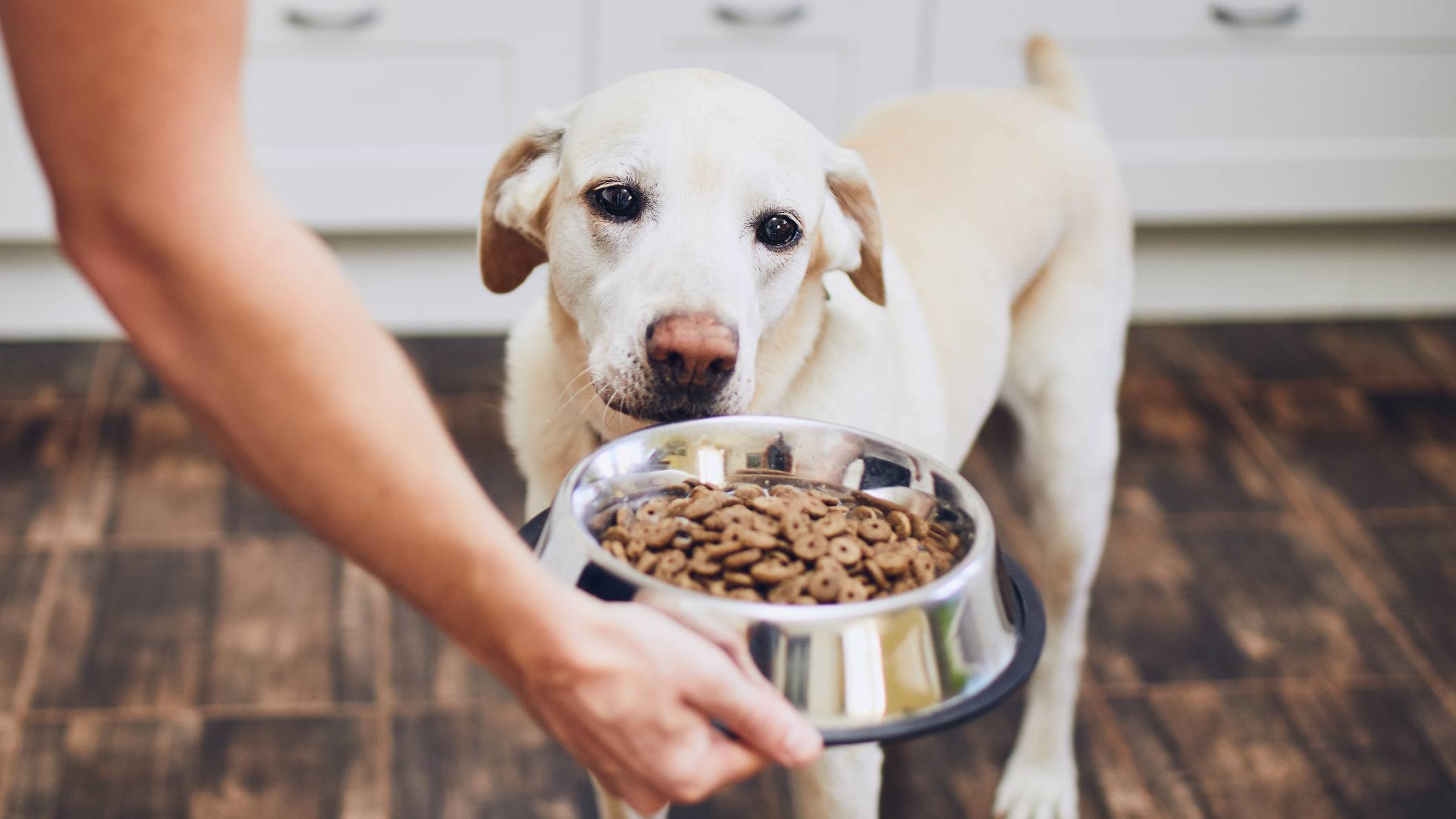
If you’re a pup parent, then it’s important to recognize the signs a dog is in pain. Since many of these signs are subtle, it can be tricky to notice them right away — especially if your pooch tries to hide their discomfort from you.
As soon as you notice anything unusual, you should take your dog to the vet to identify the cause and get the required treatment if necessary. They might be prescribed some medication, like carprofen for dogs, tramadol for dogs, or gabapetin for dogs which can all help with pain relief.
To help you work out if your dog is in pain, Dr. Barnette has listed 10 signs to look out for below. She’s an expert vet with 15 years of clinical experience treating dogs, cats, and occasional exotic patients. We’ve also asked vet Dr. Godfrey your FAQs, like how dogs sleep when they’re in pain and how you can help them at home.
What are the signs a dog is in pain?
1. Your dog’s activity level decreases
While a gradual decrease from the frenzied energy of puppyhood can be a normal age-related change, a significant decrease in activity can be associated with arthritis, an injury, or an internal illness.
Any significant change in your dog’s activity level could suggest pain, and warrants a veterinary exam.
2. Your dog is restless
Although pain often leads to a decrease in activity levels, some dogs respond in the opposite way. These dogs are unable to rest comfortably, because of their pain. They may pace during the day and night, unable to find a comfortable position in which to settle down.
3. Your dog is shaking
If your dog is shaking it can be caused by a number of factors, including anxiety in dogs or excitement. This is especially common in small breed dogs, such as Yorkshire Terriers and chihuahuas. If you notice a new onset of shaking in your dog, however, pain may be to blame.
Dogs with arthritis often tremble when standing for long periods of time, and other sources of pain can cause dogs to tremble at rest.

4. Your dog is crying or whining
Like shaking, crying and whining can also be difficult to interpret. Some dogs are more vocal than others, even when they’re feeling well. However, a new onset of crying or whining in a normally-quiet dog could indicate pain or discomfort.
5. Your dog is especially anxious
Only you know what’s normal for your dog. However, if your calm, laid-back dog begins acting anxious for no apparent reason, pain could be to blame.
Dogs can’t necessarily understand and rationalize pain like we do, so discomfort can easily lead to anxiety. Additionally, some of the behaviors and signs seen with pain in dogs (such as shaking and trembling) can easily be mistaken for signs of anxiety.

6. Your dog becomes aggressive or antisocial
Like humans, dogs can become a bit “grumpy” when they are in pain or feeling unwell. Changes in behavior can be a key indicator that your dog is experiencing pain or discomfort.
Dogs in pain may become aggressive when disturbed, whether you accidentally bump into them or ask them to move from a preferred resting spot. Similarly, they may avoid human interaction due to pain.
If your friendly, happy-go-lucky dog is suddenly acting aggressive or aloof, consider whether pain could be at the root of this behavior change.
7. Your dog is limping
This should go without saying, but a dog with a visible limp is almost certainly experiencing pain. Limping dogs should be seen by a vet, for an appropriate diagnostic workup and appropriate pain relief.
8. Your dog has an abnormal posture
Depending on the cause of your dog’s pain, you may notice that they are standing or walking in an unusual way. For example, dogs with back or neck pain in a hunched-over posture, with their neck hanging lower than their shoulders and/or their tail tucked.
Any dramatic change in your dog’s posture or movement could indicate pain and should be addressed by a vet. You might want to read our feature that answers, 'Why does my dog walk sideways?'
9. Your dog’s appetite decreases dramatically
Pain can affect your dog’s appetite in a number of ways. Dental pain or neck pain can make chewing and swallowing uncomfortable, while pain that makes your dog reluctant to move may decrease how often they walk over to the food bowl.
Additionally, well-intentioned but inappropriate use of human over-the-counter pain medications, such as aspirin for dogs, can lead to an upset stomach in dogs and a corresponding decrease in appetite.

10. Your dog is panting more than usual
Panting can have a number of underlying causes, including warm weather, anxiety, fever, and pain. While panting doesn’t automatically mean that your dog is painful, pain is one of many conditions that can lead to increased panting in dogs.
The signs a dog is in pain can vary widely, ranging from blatantly obvious to incredibly subtle. It’s important to be familiar with these signs, so you can recognize pain in your dog as soon as possible.
If you see potential signs of pain, it’s important to seek prompt vet treatment. Your veterinarian can help you head off significant medical issues before they become too serious, while also providing your dog with necessary pain relief.
How do dogs sleep when they’re in pain?
Dr. Godfrey explains that if your dog is in pain, they’re unlikely to sleep well and might become restless, struggle to settle, and wake up regularly to find a comfortable position.
She says: “You might hear them groaning, whining, or yelping, and they might pant a lot. The position your dog sleeps in may change if they’re painful, they might tuck their legs in and curl up making themselves as small as possible, or they might stretch out, especially if their back or belly is hurting.”

How do I help my dog if they’re in pain?
It might be tempting, but you should never give your dog human pain relief. Make sure you only give them medication that your vet has prescribed or advised.
Dr. Godfrey says: “Some human pain relief medications, like ibuprofen, are toxic to dogs, while others are safe only at certain doses. Even those that are dog-safe might not be suitable for your particular dog, depending on their overall health and any other medications that they are taking, so it’s always best to check with your vet first.
“If your dog is in pain and you want to make them as comfortable as possible while waiting for the vet, make sure they have a thick, padded, comfortable bed to lie on and make sure that they can reach food and water easily. Depending on the pain and how they are feeling, they might enjoy some gentle petting and reassurance, but don’t be offended if they don’t want some space.”
You might also want to read: 11 things to check when your dog is not eating.







